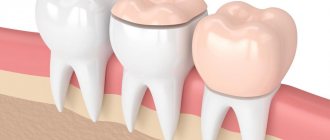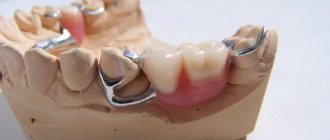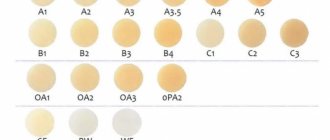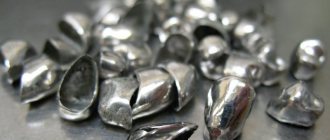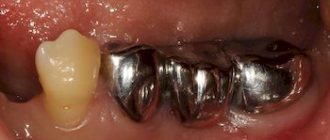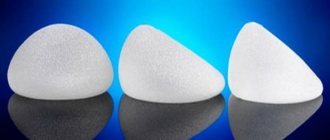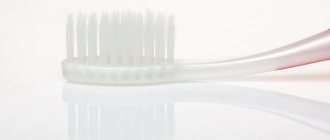Clasps or hooks on dentures: classification, what they are and how they are used
Article navigation
- What is it and what is it used for
- Classification
- Requirements
- Manufacturing
- Common clasp designs
- How to remove dentures
- Complications
- Alternatives
- Price
Question for a specialist
To fix removable dentures, dentists use various fasteners. One of the most common types is clasps or the most common hooks. Next, we will tell you in more detail about the types of clasps in orthopedic dentistry, about their purpose and structure, what functions they perform, and what requirements must be met when using them.
What is it and what is it used for
What is a clasp in dentistry? In German, klammer is a clamp, frame, bracket. In dentures, a clasp for removable dentures is an element of a partial denture, with the help of which the structure is attached to the abutment tooth and held on it. The simplest clasp looks like a small hook (that’s why such dentures are called “hooked”), but there are elements of more complex shapes. They are designed to fix and stabilize the prosthetic base - that is, the orthopedic structure must remain stable both at rest and during talking or chewing, during the process of swallowing food.
What does a clasp consist of? The design includes the following parts or elements - shoulders or rings, body and process, and in some cases the occlusal pad. Let's take a closer look at the structure of its components:
- shoulders or shoulder: this is an elastic part that covers the supporting tooth on the sides of the crown (instead of a shoulder there may be a ring) and is pressed against its gingival part, the shoulder itself smoothly passes into the body,
- the body is the connecting element between the shoulder and the process,
- the process is immersed in an acrylic base or attached to the arch of a clasp prosthesis,
- The occlusal pad is located on the chewing part of the crown between the tubercles of molars and premolars: it is a supporting element that helps to correctly distribute the chewing load. The pad is smoothly connected to the body,
- frontal overlay: the purpose is the same as the occlusal overlay, but it is placed on the front teeth (usually on the lingual side of the row, so as to be invisible from the side).
In turn, the shoulder is also divided into elements - the supporting and holding parts. The supporting one makes up approximately 70% of the length of the entire shoulder, and the holding one makes up the remaining 30%. The thickness of the clasp is on average 0.25-0.5 mm.
Ney's clasp system
This is one of the best artificial structures of its kind. The Ney system clasp has an important advantage - there is no need to use crowns. Therefore, a healthy tooth is not injured during grinding; when chewing food, the load is distributed to the chewing teeth. The denture is fixed with several fasteners, each of which is located in a specific place to hold the product in one position.
The advantages of this product are:
- reliability;
- elasticity;
- practicality;
- long operating period.
Classification and varieties
There are many types of classification of clasps - by function, shape, material of manufacture, method of connection with the prosthetic base, location of contact, degree of crown coverage, manufacturing methods. Let's look at each classification group in more detail.
By purpose or function
- retaining clasps: used in orthodontics (occlusion correction) and orthopedics (dental prosthetics). They have only 1 function - holding the plate or removable denture on the supporting crowns. When chewing, the entire load goes to the prosthetic base and gums, which can rub, resulting in pain and stomatitis. Another method of application is fixation of rubber dam (latex film for dental treatment),
- supporting-retaining (with an occlusal pad, for example): also options are also used in orthodontic and orthopedic treatment. However, they have 2 functions - holding and support. When chewing, the load will be distributed, among other things, to the supporting teeth, their ligaments and the adjacent bone (periodontal tissue). In this case, the mucous membranes “suffer” less.
Experts note that the division into retaining and support-retaining is conditional. Because retaining hooks also transfer part of the load to the periodontium. But in this case, the distribution of pressure is incorrect, so negative consequences often appear - injuries, loosening of teeth, loss of gums.
By shape
The following types of clasps are distinguished by shape:
- flat,
- tape,
- semicircular,
- round.
Don't know what type of prosthetics to choose?
We will help in the selection, advise where to read more information and compare types of prosthetics.
Consultation with an orthopedic doctor in Moscow clinics is free! Call now or request a call
Working hours: from 9:00 to 21:00 - seven days a week
According to the method of connection with the prosthesis base
The connection can be of the following types:
- stable, i.e. rigid: the hook, through which pressure is distributed on the crown, is fixedly attached to the prosthetic base. There is almost no load on the gums and alveolar ridge,
- springy or semi-labile: a distinctive feature is the presence of a long body that is capable of springing. Here, only part of the chewing load is applied to the crown, and the rest is absorbed due to the “lever effect”,
- articular or labile: due to the presence of a hinge (or joint), almost all the pressure from the prosthesis goes not to the support, but to the gum and alveolar ridge.
At the location of contact
Based on their location or location, these elements are divided into types such as:
- dental: adjacent to the crowns, most often made of metal,
- pelota or gingival: they are wide extensions of an acrylic base, fixed only on the gums,
- dentogingival: simultaneously in contact with the gums and supporting crowns. For example, immediate dentures or “butterflies” have these – what the clasps on a denture look like is shown in the photo.
According to the degree of coverage of dental crowns
- one-armed and two-armed,
- ring-shaped (also called “changeover”),
- double,
- multi-link clasp: is a frontal overlay (it was discussed at the beginning of the article) on the lingual surface of the front teeth - most often placed on the lower ones. Externally, a multi-link one looks like either a horizontal plate with processes or several united half rings. Helps stabilize an entire group of teeth.
According to the material of manufacture
Classification according to materials of manufacture includes such types of clasps as:
- from base metals: for example, from medical steel, nickel, cobalt alloys with chromium and iron, titanium alloys,
- from noble metals: platinum, gold, palladium,
- from synthetic polymers, resins: plastic, acrylic, nylon, acetal.
By manufacturing method
- bent clasps: for production, wire is used, which is bent in accordance with individual bite parameters. Such elements are more elastic or resilient, but fit less accurately to the crowns,
- cast: the manufacturing technique of casting also involves the use of metal. Cast metal clasps are less elastic, but more accurately replicate the anatomical parameters of the crown, i.e. fit tighter
- made using cold or hot polymerization: gingival ones are made from a synthetic polymer (acrylic, nylon, etc.), usually simultaneously with the manufacture of the prosthetic base.
Swenson and Jackson design
The clasp used on canines is called the Swenson design. This design creates the correct load on the supporting teeth. This is very important during their mobility. The disadvantage of the design is that there must be a gap between the molar and premolar to secure the anterior shoulder.
A reversible clasp is a type of Jackson support-retaining device. The product has 2 branches and bodies. The structure is made by cast and bent method in the shape of a loop.
Requirements for hook placement
Denture clasps must be selected in accordance with all of the following requirements:
- the fixation will be the same on all supporting teeth,
- rotation or overturning of the prosthesis is excluded,
- do not overestimate the bite in the presence of occlusal pads,
- do not lead to injury to the teeth (including those of the opposite or antagonistic teeth) when closing the jaws and chewing,
- do not greatly reduce the aesthetics of a smile: metal ones located in the “smile zone” are highly noticeable from the outside, while synthetic ones are less noticeable. But the latter quickly stretch and break more often,
- the supporting teeth do not have pathological mobility,
- crowns of correct anatomical shape and sufficient height (5 mm or more).
You also need to take into account the position of the boundary line - this is the line that divides the crown into supporting and retaining parts. This parameter is determined using a parallelometer device. So, for example, on the lower teeth, the upper part of the clasp (occlusal pad and top of the shoulder) is located above the boundary line, and the lower part of the shoulder falls below the line. On the upper jaw, everything is, accordingly, the opposite.
Side effects from clasps
Denture clasps can cause:
- To the abrasion of the tooth enamel itself due to constant load and micro-movements.
- This leads to a significant deterioration in the hygienic condition of the mouth due to the fact that the clasp is a separate structure and various food debris can accumulate under it. As a result, carious processes begin to develop very quickly. And this destroys the supporting teeth.
- Clasps can cause teeth to become very loose. This happens due to the movements of the prosthesis in a horizontal position. As a result, there is a functional overload of the teeth, which serve as support.
Sources used:
- Kurlyandsky V. Yu. Orthopedic dentistry. — 4th, corrected. - M.: Medicine, 1977.
- Eden SE; Kerr WJS; Brown J. (2002). "A clinical trial of light cure acrylic resin for orthodontic use." Journal of Orthodontics.
- Earls, Stephanie (22 February 2014). "Re-enactor brings George Washington to life." The Washington Times.
- Milward, P.; Katechia, D.; Morgan, M. Z. (November 2013). "Knowledge of removable partial denture wearers on denture hygiene". British Dental Journal.
How is production carried out?
Manufacturing is carried out in a dental laboratory by a dental technician. First, the model of the prosthesis and materials are determined. As a rule, both metal wire and cast hooks are bent using special pliers, pliers and round nose pliers. Then the clasp is included in the base and the entire structure is tried on the patient; if necessary, the product is modified. During the manufacturing process, it is important to comply with the requirements for the manufacture of the shoulder and the implementation of the contact process. Thus, the shoulder should not overload the supporting tooth, but should adhere to the crown at the maximum number of points. The metal is well polished so that the hook does not injure the enamel and does not become a place where plaque accumulates. As for the process, it is bent with round nose pliers and notches are made for better connection with the base.
Common clasp designs
- Ney's system: there are 5 types of clasps - Acker, Roach, combined (from Acker and Roach designs), single-arm reverse action, single-arm ring. This system was developed in 1949 with the participation of dentists and engineers. It includes both already known fastenings (modified) and new ones,
- developed by Acker: a supporting-retaining element with a rigid connection, consisting of 2 arms, an occlusal pad and a body. One of the oldest and most famous varieties, which first appeared in 1926,
- Roach: a support-retaining device with an occlusal pad and a spring (elastic) connection, which is easy to distinguish from others - its two arms look like the letter “T”. Because of this similarity, the hook is called “split”. Made from cobalt-chromium and gold-platinum alloys,
- Bonneville: Also known as the “six-arm” because it consists of 4 arms and 2 occlusal pads. Fixes 2 teeth at once,
- Jackson: includes 2 branches and 2 bodies, made of wire,
- Adams: one of the most versatile and effective types, suitable for both free-standing teeth and those included in segments,
- arrow-shaped Schwartz clasp: consists of 1 or 2 links, can also be multi-link. It is made of elastic wire and fits well into the interdental spaces.
%akc72%
Lock type 3, 4 and 5
Type 3 fasteners combine Acker and Roach fasteners. One shoulder has a T-shape, the second is located next to the chewing area. Clamp 3 is recommended to be used when the dividing line is uneven.
Type 4 latch is called reverse-acting. It is used when small molars and canines are inclined, as well as when there is low support.
Type 5 fasteners are also called single-arm ring fasteners. It is recommended to use it if single teeth are positioned obliquely. The body is supported and completely surrounds the tooth. The main disadvantage is the fragile retention of the prosthesis, therefore discomfort may occur when chewing solid food.
Complications that may arise due to clasps
Negative consequences or complications associated with prosthesis attachments can occur for various reasons. These include low-quality materials, errors at the manufacturing or installation stage, and non-compliance with operating rules. You may also be allergic to metal or synthetic materials. In patients who already have dentures made of other metals in their mouths, galvanosis often occurs - the sensation of an electrical impulse. Often chips and cracks appear in the enamel, gums bleed and recede, and the necks of the teeth are exposed.
If oral hygiene is unsatisfactory, pieces of food become trapped under the hooks, plaque and tartar form. This provokes caries, periodontitis, causes an unpleasant odor and generally worsens the aesthetics of a smile.
Caring for clasp dentures
A dental patient gets used to the prosthesis in about two days. At the initial stage, problems with diction may arise, but this goes away after getting used to it and some exercises. There may also be problems when eating - pain and control of food intake at the initial stage. It is better to exclude hard and sticky foods from the diet while adapting to the prosthesis. It is also not recommended to remove the denture at night, as this will allow the oral cavity to quickly adapt to the changes.
Cleaning and rinsing of the prosthesis is performed twice a day with special products prescribed by the attending physician. Storage of the prosthesis excludes water; it is simply placed in a special container.
If the prosthesis is damaged, you must contact a dental clinic or dental laboratory, where work on the repair of clasp dentures is carried out. Sometimes restoration of the prosthesis takes several hours - with prompt treatment. Most often, clinics provide guarantees for the installation and for the prosthesis itself, so repairs can be free.
The Faberge dental laboratory in St. Petersburg provides dental services. We are ready to provide all the information you are interested in about our production, the technologies used and the specialists. With us you will receive first-class products of any kind.
What alternatives exist
An alternative to clasp fixation are attachments (clasps) and telescopic crowns. All of these options are used for removable dentures. Dentists note that orthopedic structures on attachments are fixed better, and they themselves are completely invisible from the outside. As for telescopic crowns, this is also a very good option, but it is considered the most difficult to manufacture.
“Mom wore a clasp denture for several years. It seemed convenient, but outwardly the metal hooks on the teeth stood out. Well, she began to smile less, of course, because of this. Then the prosthesis had to be changed, and the doctor persuaded me to use attachments. “He turned out to be much better in beauty, from the outside he looks like his own teeth and no hooks are visible.”
Lina O., review from the website stomatology.rf
If we consider the best option for prosthetics in principle, then here the first place is firmly held by dentures fixed on implants - fixed or conditionally removable. They have many advantages - strong, reliable and durable fastening, highest aesthetics, comfort when chewing (they feel like your “native” teeth).
Read on the topic: conditionally removable dentures on implants - how they are attached and how they differ from others.
Useful tips
How to get used to dentures? At the beginning of wearing, many feel pain and scratches appear. You need to make sure that the structure is put on correctly. If this does not help, then you need to visit the dentist.
Pain often appears during chewing, so it is recommended to abstain for a while from solid foods that cause discomfort. Gradually, you need to switch to your usual diet, since chewing load is an important point in getting used to the prosthesis.
How to get used to dentures if you are worried about dry mouth or increased salivation? In this case, it is advised to drink enough water in small sips throughout the day.
The use of special fixing gels and ointments will help to securely secure the structure and prevent the formation of abrasions and wounds. Although the formation of chafing at the initial stage of addiction is considered normal. This process can last 3 months. At this time, the formation of the prosthetic bed occurs. To prevent chafing, you need to:
- clean your denture regularly;
- have the product adjusted by a doctor;
- rinse your mouth after eating.
Often, long-term addiction occurs as a result of an incorrectly selected or ill-fitting product.
To find out how much dentures cost in each specific case, you need to consult a dentist. The reliability of their fastening and the aesthetics of a smile depend on an element such as a clasp. Therefore, you need to choose it responsibly and seriously.
How much does prosthetics cost?
The cost of prostheses with hook fixation is the lowest in the segment. For example, a “butterfly” prosthesis can cost from 6,500 rubles, a removable acrylic one from 15 thousand rubles. Much here depends on the length of the orthopedic structure, the type and material of the fastening, the number of clasps, and the base material.
1Glen P. McGeevey Partial Dentures, 2006.
Your questions and answers
QUESTION Hello, tell me, which prosthesis with clasps is better to install? Irina T.
ANSWER Hello, Irina. The choice of prosthesis will depend on the condition and number of supporting teeth, as well as the capabilities of the clinic and the patient’s preferences. With clasps you can make a removable partial denture, acrylic, Acry-free, nylon, acetal, or clasp denture. Better reliability and more compact sizes are found in classic clasp frames, as well as in their modern metal-free counterparts Quattro Ti (“Quadrotti”).
Author: Chernov A. R. (Thank you for your help in writing the article and the information provided)
Support-retaining clasps
Clasps are the most common way to strengthen clasp dentures. They are produced by casting or bending from wire (stainless steel, gold-based metal alloys1). The shape of the clasp varies depending on the function it performs (support, retention, etc.) and its retention to the tooth. Correct location
clasps on the coronal part of the tooth are based on the rational use of their shape.
The line passing along the most convex part of the tooth crown is called
Equator.
The horizontal equator line divides the tooth crown into two parts: occlusal and retention (gingival), which is located below the equator line.
The supporting elements of the clasps are located on the occlusal part, and the retaining elements are located on the retention part.
The arch of the clasp denture and its location on the jaws
This is an element of an arc prosthesis that connects its parts. In this case, a resistance block is obtained, which provides a functionally advantageous load on the supporting teeth (Kurlyandsky V.Yu. 1956).
The main function is to combine all elements of the supported prosthesis. The arc must be strong, rigid, and have good physical and mechanical properties. The location of the arch on the upper and lower jaw depends on the topography of the dentition defect, the relief of the alveolar process, the shape of the palate, the severity of the torus and other factors.
The most favorable shape of the arch is oval, semicircular, semi-oval. The edges of the arch should be rounded to avoid injury to the tongue and soft tissues.
The best rigidity of the arc is ensured by its production by casting from a cobalt-chrome alloy.
The general rule when designing arches on the upper and lower jaw is that the arch should be separated from the mucous membrane by the amount of compliance of the soft tissues of the prosthetic bed.
On the upper jaw, the arch should have a thickness of 0.9-1.2 mm, and a width of 8-10 mm (Sorokin G.P.) 4-6 mm (Perzashkevich L.M.). The arch should be 0.5 mm away from the mucous membrane of the upper jaw (Perzashkevich L.M.).
On the lower jaw, the arch is located at a distance of 1-1.2 mm below the necks of the teeth and does not reach the floor of the oral cavity by 2-3 mm. On the lower jaw, it is 1-1.2 away from the mucous membrane. When immersed, the arch should not come into contact with the underlying tissues and injure the frenulum. The width of the mandibular arch should not be less than 3 mm, thickness - 1.5 mm (Sosnin G.P.).
According to Kopeikin V.N. (1988) the arch of the prosthesis on the lower jaw should be unevenly spaced from the mucous membrane: at the upper edge by 0.5-0.6 mm, at the lower edge by at least 1 mm.
Making a lingual arch can sometimes be difficult or impossible.
Their use is contraindicated in:
1. Lack of space for the arc.
2. Bilateral convergence of premolars.
3. Significant inclination of the alveolar process anteriorly (Perzashkevich L.M. 1974).
In such cases, the use of a lingual plate or vestibular arch is indicated. The lingual plate covers the oral surface of natural teeth or alveolar processes from the line of greatest curvature of its slope to the border of the mobile mucous membrane. The vestibular arches are placed in the vestibule of the oral cavity near the labial and buccal alveoli. They are made wider and flatter than lingual ones.
A modified continuous clasp is used in cases where there is a very small space between the floor of the mouth and the gingival margin. This clinical picture occurs with significant atrophy of the alveolar process or after gingivectomy.
Basis of clasp dentures
The base represents an element of a removable denture that carries artificial teeth and branches from the metal parts of the supporting denture. The base is strengthened onto the supporting teeth through connecting elements and rests on the alveolar process.
Currently, gold and cobalt-chromium alloys, as well as various plastics, are used to make bases.
The advantages of a base made of cobalt-chromium alloy over gold are that the former has a low specific gravity, and over plastic it has high strength. When relining the base: the advantage remains with plastic.
68. Features of research and preparation of dentition when planning the design of clasp dentures. Clasp system for fixing clasp structures. Patterns of selection and distribution of clasps on abutment teeth.
Planning the design of a clasp prosthesis consists of:
1) in determining the route of insertion and removal of the prosthesis; 2) in marking the model to find the most convenient location of the clinical equator on the supporting teeth and the corresponding position of the clasps; 3) in determining the position of the arch on the palate and alveolar process of the lower jaw and other elements of the prosthesis (multi-link clasps, branches, processes, etc.). All this in general allows you to apply a drawing of the frame of the future prosthesis to the model. When planning a fixation system for a removable denture, two main goals are pursued: 1) to create reliable fastening of the denture during chewing and speech; 2) to ensure such fastening of the prosthesis in which it would have the least impact on the supporting teeth and the mucous membrane covering the toothless alveolar processes. Of particular importance in solving these problems is a clear understanding of the biomechanics of a removable denture, the influence of forces that displace the denture: gravity, chewing pressure and traction force. The gravity of the prosthesis on the lower jaw is neutralized by the supporting teeth, alveolar processes with the mucous membrane covering them. In this case, it helps to keep the prosthesis on the jaw. In the upper jaw, this force makes it difficult to attach the prosthesis and, under certain conditions, destroys its stability. This is especially pronounced in case of bilateral end defects, when the prosthesis base, lacking distal support, can sag or tip over under the influence of gravity. Chewing pressure also causes the denture to move. Under the influence of sticky food, the denture can move away from the prosthetic bed of both the upper and lower jaw. This increases the overturning moment caused by the weight of the prosthesis. Its rotation occurs around the clasp line. Under the influence of chewing pressure, the prosthesis undergoes spatial movement in three planes - vertical, sagittal and transversal. Depending on the chosen fixation method, the displacement of the prosthesis may predominate in any one plane. Its movement in other planes is, as a rule, less pronounced, but almost always occurs. This makes the nature of the displacement of the prosthesis under the influence of chewing pressure so complex that it requires detailed consideration under different clinical conditions, depending on the type of removable denture, the method of its fixation, the size and topography of dentition defects, the nature and magnitude of atrophy of the edentulous alveolar process, etc. Thus, preserving abutment teeth and preventing their functional overload during clasp fixation is an important problem. One of the ways to solve this is the correct location of the clasp line. All support-retaining clasps and their elements must be located strictly regularly in relation to the clinical equator - the largest perimeter of the tooth, taking into account its inclination. The clinical equator coincides with the anatomical equator only when the longitudinal axis of the tooth is strictly vertical. Usually, due to the physiological inclination of the teeth, the line of the anatomical equator does not coincide with the clinical one. If the tooth is inclined orally, then the line of the clinical equator on the lingual side shifts to the occlusal surface, and on the vestibular side it moves down to the gingival margin.
To properly design clasps, it is important to determine the general clinical equator line of the dentition, which is also called the clinical equator, prosthetic equator, contour height, guide line, and general sight line. E.I. Gavrilov was given a name that has become commonly used - boundary line (demarcation line). The boundary line divides the tooth surface into supporting (occlusal) and retaining (retention, gingival). It cannot be called the equator, because... does not coincide with it and, unlike it, changes position due to the inclination of the tooth: on the side of the inclination it approaches the chewing surface, and on the opposite side it moves away from it. The boundary line is identified through parallelometry and serves as a guide for the location of parts of the arm of the support-retaining clasp.
The concept of clasp lines and the clinical equator of the tooth. Planning the design of a clasp prosthesis. Parallelometry. Parallelometry methods. The concept of the route of insertion and removal of the prosthesis.
Clasp line is an imaginary line connecting the supporting teeth on which the removable denture is fixed. Represents the axis of possible rotation of the prosthesis. It can have different directions: sagittal, transversal and diagonal. The most convenient directions for the clasp line are the last two (the prosthesis is located on both sides of the clasp line, which prevents it from sagging). The least advantageous is the sagittal location of the clasp line, in which the base of the prosthesis is located on one side and, in the absence of anatomical retention, can sag, rotating around the clasp line as if around an axis. If the prosthesis has several clasps, then the clasp lines, intersecting, form geometric shapes: triangles, irregular quadrangles, etc. This fastening system, unlike the one described above and called linear, is called planar. It should be considered more rational, since its use eliminates rotation of the prosthesis.
Clinical equator Synonyms: structural equator, line of clasp contact, or line of sight, dividing line, boundary line, control line, orthopedic equator.
It denotes the largest convexity of the crown in relation to the direction of insertion. Due to the inclination of the teeth, the line of the anatomical equator does not coincide with the greatest convexity of the tooth in relation to the vertical plane. We determine it by the position of the model on the parallelometer.
PARALLELOMETRY The path of insertion and removal of the prosthesis, as well as the boundary line common to all supporting teeth, in relation to which the elements of the support-retaining clasp will be located, are determined using a parallelometer. A parallelometer is a device for determining the greatest convexity of teeth on jaw models, identifying the relative parallelism of the surfaces of two or more teeth or other parts of the jaw, such as the alveolar process. The device has a flat base on which a stand with a bracket is fixed at a right angle. The bracket is movable in vertical and horizontal directions. The arm of the bracket relates to the post at an angle of 90°. On the arm of the bracket there is a clamping device for interchangeable tools. This device allows you to move tools vertically.
The set of tools includes: • a flat analyzer to determine the most advantageous position of the general viewing line (boundary line), and therefore the position of the clasps, ensuring unhindered insertion of the prosthesis and its good fixation;
• a pin in which leads are secured with a collet to outline a line; • pins measuring the degree of retention: calibers? 1, 2 and 3; they differ in the diameter of the measuring disk: disk ? 1 - 0.25 ml, disk ? 2 - 0.5 ml, disk ? 3 - 0.75 ml (with their help, the position of the ends of the retaining arms of the clasps on the supporting teeth is determined); • knife pins for removing excess wax after filling undercuts. The set also includes a table for securing models. The table platform is hinged to the base, which allows you to tilt the models and bring them to the tools at different angles. All parallelometer designs are based on the same principle: for any displacement, the vertical rod is always parallel to its original position. This allows you to find points on the teeth located on parallel vertical planes. The size of the support-stabilizing and retention zones on the tooth depends on the position of the general survey (boundary) line or the clinical equator, which, in turn, depends on the inclination of the model during parallelometry. Basic rules of parallelometry : 1) a parallelometer makes it possible to determine the design of a clasp prosthesis; 2) the common clasp (boundary) line, despite the fact that it is curved, should be generally parallel to the occlusal plane; 3) the prosthesis, when fixing it in the oral cavity, must transmit chewing pressure along the axis of the tooth; 4) the prosthesis must be designed so that it rationally distributes chewing pressure between the remaining teeth and alveolar processes. Three methods of parallelometry are known : arbitrary, the method of determining the average inclination of the longitudinal axes of the supporting teeth (Novak’s method), the method of tilting the model (the selection method or “logical” method).
Arbitrary method . The model, cast from high-strength plaster, is installed on the parallelometer table so that the occlusal plane of the teeth is perpendicular to the stylus rod. Then a parallelometer lead is brought to each supporting tooth and a general survey line or clinical equator is drawn. The line with this parallelometry method may not coincide with the anatomical equator, because its position will depend on the natural inclination of the tooth, therefore, on individual teeth the conditions for the placement of clasps may be less favorable. This method of parallelometry is shown only when the vertical axes of the teeth are parallel, their inclination is slight and the number of clasps is minimal. Method for identifying the average inclination of the long axes of abutment teeth . The edges of the base of the model are cut so that they are parallel to each other. The model is fixed on the parallelometer table, after which the vertical axis of one of the supporting teeth is found. The table with the model is installed so that the analyzing rod of the parallelometer coincides with the long axis of the tooth. The direction of the latter is drawn on the side surface of the base of the model. Next, the vertical axis of the second supporting tooth, located on the same side of the dentition, is determined and also transferred to the side surface of the model. Then the resulting lines are connected by parallel horizontal lines, after dividing the horizontal lines in half, the average approximate axis of the supporting teeth is obtained. In the same way, the average axes of the teeth on the other side of the model are determined. The resulting average axes are transferred to the free edge of the model base using the analyzing rod of a parallelometer, and the average axis of all supporting teeth is determined from them. Then the table with the model is finally installed in the parallelometer. The test rod is changed to graphite and a sight line is drawn on each abutment tooth. When drawing, the end of the graphite rod should be located at the level of the tooth neck. The disadvantage of the method is the duration, difficulty and likelihood of error when determining the general survey (boundary) line.
Selection method . The model is mounted on a parallelometer table. The table is then positioned so that the occlusal surface of the model teeth is perpendicular to the analysis rod (zero inclination). The latter is brought to each supporting tooth in turn and the presence and size of the support-stabilizing and retaining zones is determined. It may turn out that one or more teeth have good conditions for the placement of clasp elements, while others have unsatisfactory conditions. Then the model must be viewed from a different angle. From several possible inclinations, choose the one that provides the best retention zone on all supporting teeth. When planning the design of an arched prosthesis, the position of the supporting teeth in the dentition should also be taken into account. Displacement of teeth to the mesial, distal, buccal or lingual side makes it difficult to create their parallelism by grinding down hard tissues, because is fraught with opening of the tooth cavity or thermal damage to the pulp. In such cases, doctors often resort to depulping them. Experience shows that depulping teeth in order to create their parallelism when using an arched prosthesis should currently be considered an exclusively last resort measure. The correct choice of the design of supporting and retaining elements after studying the models in a parallelometer sharply reduces the indications for depulping teeth and covering them with crowns.
Special conditions arise when there is a significant vestibular inclination of the anterior group of teeth, when it is necessary to include splinting elements in the design of the prosthetic splint. The latter are sometimes impossible to apply due to a violation of aesthetics or the danger of difficult application of the prosthesis. A favorable condition for the location of the claw-shaped processes is the presence of trema and diastemas. It is equally impossible to plan an arched prosthesis with a lingual inclination of the lower anterior teeth. When planning the design of a clasp denture, the type of bite is of great importance. Thus, with a deep or deep traumatic bite, the design of the prosthesis cannot include a multi-link clasp with splinting elements that will interfere with the closure of the teeth and the preservation of the usual interalveolar height. In patients with such a bite, it is necessary to find out the possibilities of increasing the interalveolar height, and only after that, if there are indications, a cast palatal strip can be used, restoring the incisal-tubercle contact.
The path of insertion of the prosthesis is the movement of the prosthesis from the initial contact of its clasp elements with the supporting teeth to the tissues of the prosthetic bed, after which the occlusal overlays are installed in their beds, and the base is precisely located on the surface of the prosthetic bed.
The way to remove the prosthesis is to move in the opposite direction, i.e. from the moment of separation of the base from the mucous membrane of the prosthetic bed to the complete loss of contact of the supporting and retaining elements with the supporting teeth.
70. Biomechanics of a clasp prosthesis: statics and dynamics of “on” and “end” saddles. Factors determining the choice of method for connecting clasps to prosthetic saddles. Side effects of prostheses on the tissue of the prosthetic bed, the problem of the end saddle.
The base of the clasp denture or the saddle-shaped part is the processes of the arch located above the ridges of the toothless alveolar parts or processes of the jaws. These frame elements, as a rule, are meshes or lattices, which should be 1.5-2 mm away from the mucous membrane and serve as a device for attaching the base material of the saddle part of the arch prosthesis.
When determining the design of fastening the saddle-shaped part of the metal base of the clasp prosthesis, it is necessary to take into account the shape of the edentulous alveolar process. With a wide comb, preference should be given to the so-called cellular form. With a narrow ridge and small interalveolar space, one should prefer the “ladder” shape, made in the form of a loop-shaped process with jumpers. In addition, with limited interalveolar space, it is useful to use special metal extensions extending from the base attachment.
The design of the transition of a metal base into a plastic limiter (rebate) is carried out in different ways. In some cases, the plastic base of the prosthesis is simply placed on a metal frame. Sometimes, at the point of their connection, a groove is polished in the base metal to serve as a support for the plastic.
In addition to the frame, the arch prosthesis includes a base with artificial teeth, designated as the saddle part. The base is represented by a plastic plate covering the toothless alveolar part of the jaw. It serves, firstly, to strengthen artificial teeth, restore the shape and size of this part of the jaw, damaged due to atrophy of the alveolar process and, secondly, to transfer the main part of the chewing pressure to the toothless alveolar part of the jaw, limiting the displacement of the prosthesis in the horizontal plane. A small base area without including supporting elements in the arch prosthesis design can cause overload of the underlying tissues of the prosthetic bed.
When using partial removable dentures using various clasp fixation systems, the question arises about the method of connecting the clasps to the prosthetic base. The uniqueness of the problem stems from the difference in the compliance of the periodontium and the mucous membrane of the alveolar process. According to Korber (Korber), the pliability of the mucous membrane is approximately 10 times greater than that of the supporting tissues of the tooth. As a result of this difference, there is a difference in the load of individual areas of the mucous membrane and periodontium of the supporting teeth. The second task is to crush the chewing pressure between the alveolar process and the supporting teeth. It arises from the need to prevent the destructive effect of the prosthesis on the supporting teeth.
There are rigid (stable), springy (semi-labile) and articular (labile) connections between the clasp and the prosthesis base. In the first case, the clasp is connected to the prosthesis motionlessly and the chewing pressure on the prosthesis is transmitted to the supporting teeth through the clasp.
In the second method, the arms of the clasp are connected to the prosthesis through a long springy extension. With this connection, part of the pressure of the prosthesis is transferred to the teeth, the other part is absorbed by the spring lever (Fig. 133). The effectiveness of a spring depends on its length, cross-sectional profile, the nature of the material and its heat treatment. A wire spring has the best spring properties. Flat or semicircular cast springs made of stainless steel, and even placed on the edge, do not have sufficient elasticity. In the third method (articular connection), a hinge device is provided. With it, the clasp only holds the prosthesis without transferring pressure to the supporting teeth. With an articular connection, the load is immediately transferred to the mucous membrane of the alveolar ridge. The spring connection, on the contrary, transfers the load to the mucous membrane of the alveolar ridge a little later, when the periodontium of the tooth is already in the corresponding tension. With a rigid connection, the functional use of the supporting teeth increases, and at the same time the load on the alveolar ridge tissue decreases. When using a joint or spring levers, on the contrary, the abutment teeth are loaded less than the alveolar ridges.

